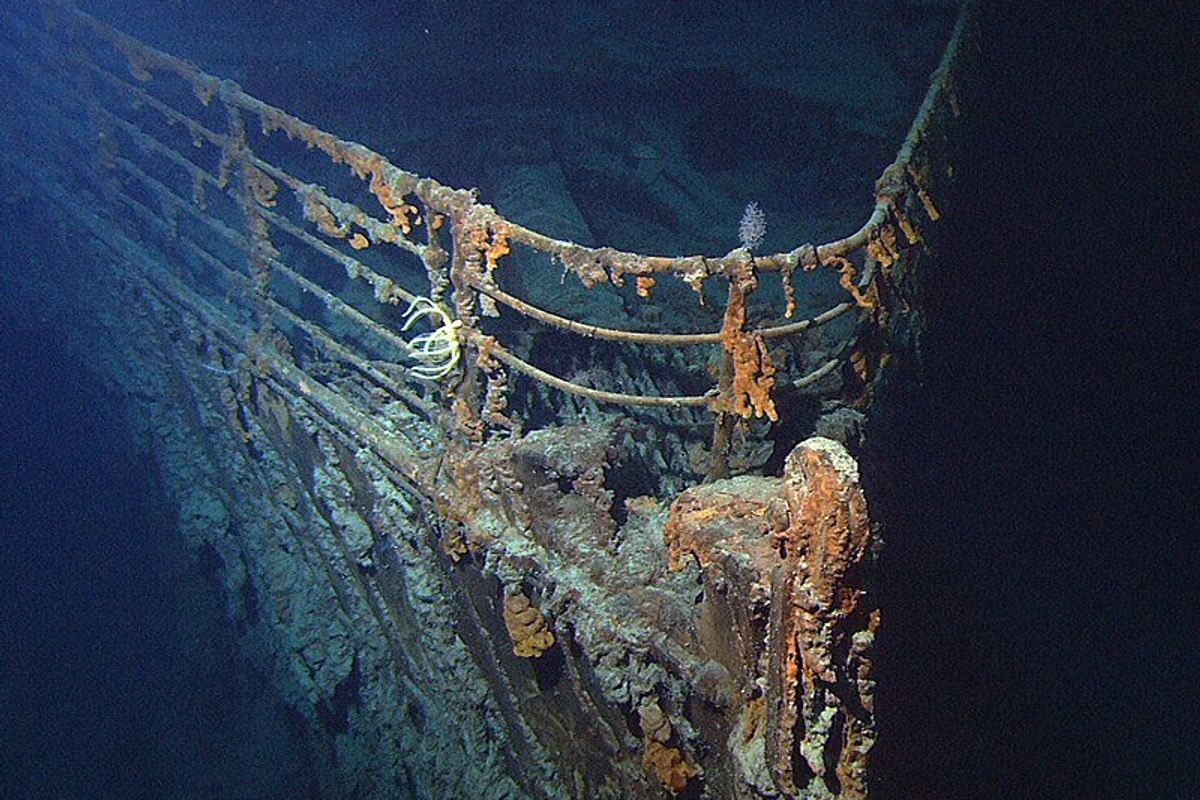
The violent implosion of the Titan submersible on the way to visit the Titanic captured people’s attention across the globe. It brought up a lot of conversations about social class, the vehicle’s questionable construction and the haunting history of death surrounding the Titanic itself.
For those of us who don’t work in oceanography or physics, it also brought up a lot of questions about underwater implosion. A big one circulating among conspiracy theorists and confused laypeople alike: Why did the Titan implode while the Titanic didn’t?
The Titan submersible is understood to have disintegrated in milliseconds somewhere neat a depth of 11,500 feet. In comparison, we can still see most of the wreckage of the Titanic 12,500 feet down on the ocean floor.
A lot of people are asking the question on Twitter.
why didn’t the titanic or the bodies implode on the way to the ocean floor too
— maybe: hayley (@HayleyStrickler) June 26, 2023
So why didn’t the Titanic Implode then?
— Emiko Yamasaki (@emiko_yamasaki) June 22, 2023
The Titanic didn’t implode, so why would the sub?
This story does NOT make sense.#trustyourgut https://t.co/GYIrVEjx6R
— Swee_Liberty (@Sweet_Liberty76) June 22, 2023
First, what is an implosion versus an explosion? “In an explosion, the force acts outwards, but in an implosion, the force acts inwards,” Arun Bansil, professor of physics at Northeastern University, said. “When a submersible is deep in the ocean, it experiences the force on its surface due to water pressure. When this force becomes larger than the force hull can withstand, the vessel implodes violently.”
Blair Thornton, a professor at the University of Southampton, told NBC that the force of the implosion was up to 10,000 tons of physical force, the equivalent of the weight of the Eiffel Tower.
So, if the Titanic also traveled through the same depths en route to the bottom of the ocean, why didn’t it suffer a similar fate?
In some ways, it’s quite simple: There was a difference in pressure between the enclosed submarine and the Titanic, which had doors and windows so that water could easily travel through it, equalizing the pressure on the inside and the outside.
However, researchers believe there may have been two implosions on the Titanic’s journey to the bottom of the ocean. Research published by Dave Gleicher posits that parts of the stern and the poop deck imploded as the ship sank. But most of the boat was water permeable, so the wreckage was recognizable when it was first discovered in 1985.
Although no one is sure why the Titan submersible, created by OceanGate Expeditions, succumbed to the pressures of the ocean depths, many experts are pointing to its carbon fiber hull as the culprit. Carbon fiber is a relatively new material, especially for submarines, that hasn’t been adequately tested in extreme depths. Some speculate that the Titan’s hull could have been compromised due to its 2 dozen previous dives. Like a balloon, all it takes is one hole at extreme depths for the entire vessel to collapse.
“It was very clear that these people were operating a submersible that was unsafe,” Katy Croff Bell, president and founder of the Ocean Discovery League, told NBC News.
“They knew it. They had been warned on multiple occasions,” she added. “And I think that we can only hope that we ensure in the future that something like this does not happen, and people take this very, very seriously.”
